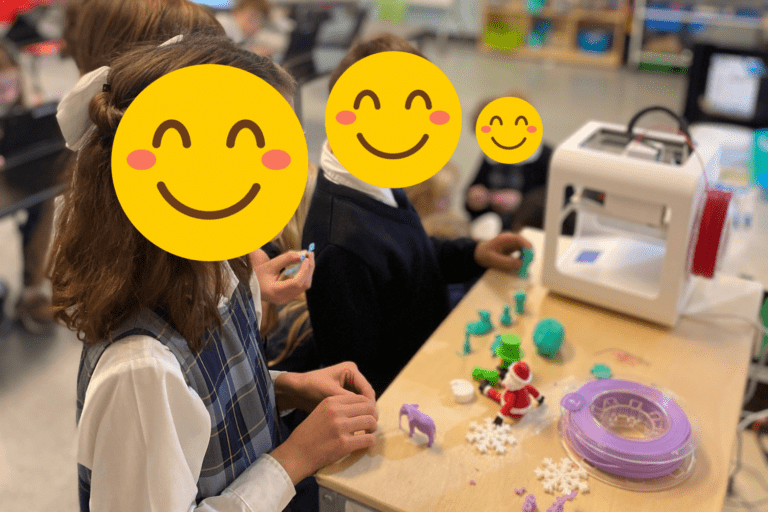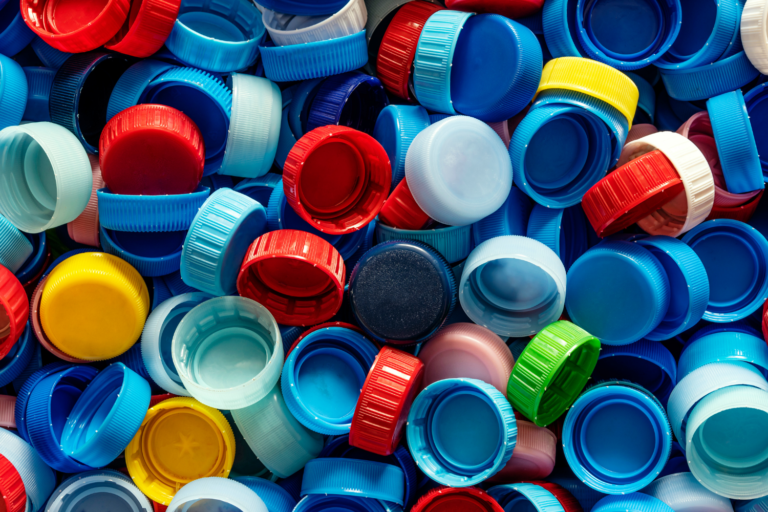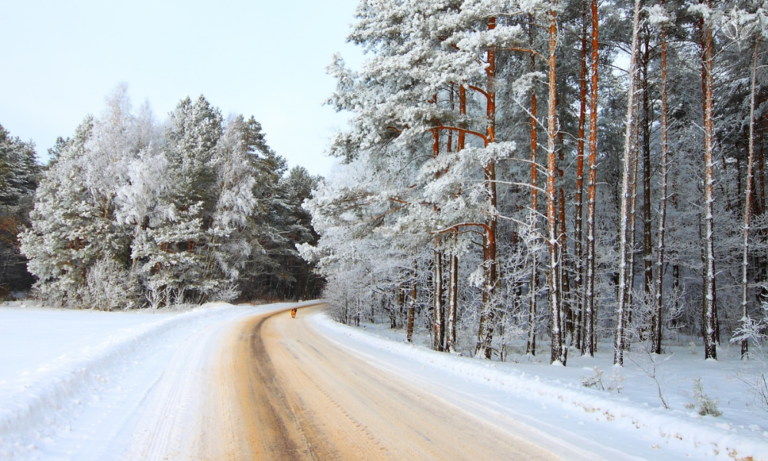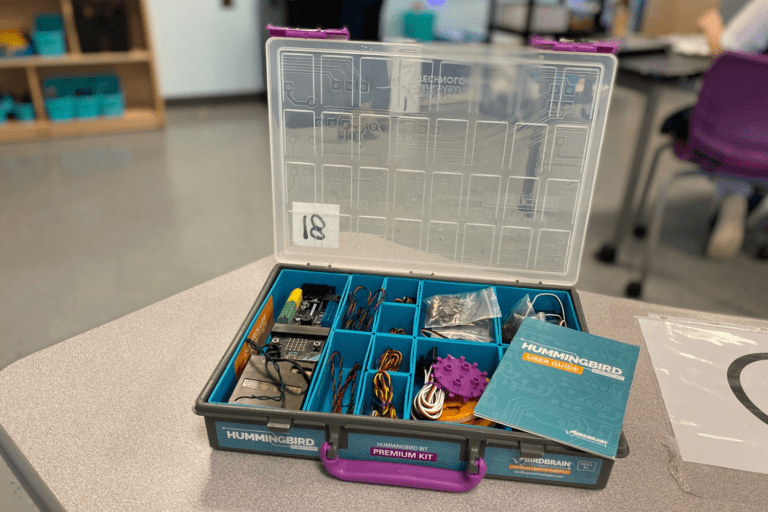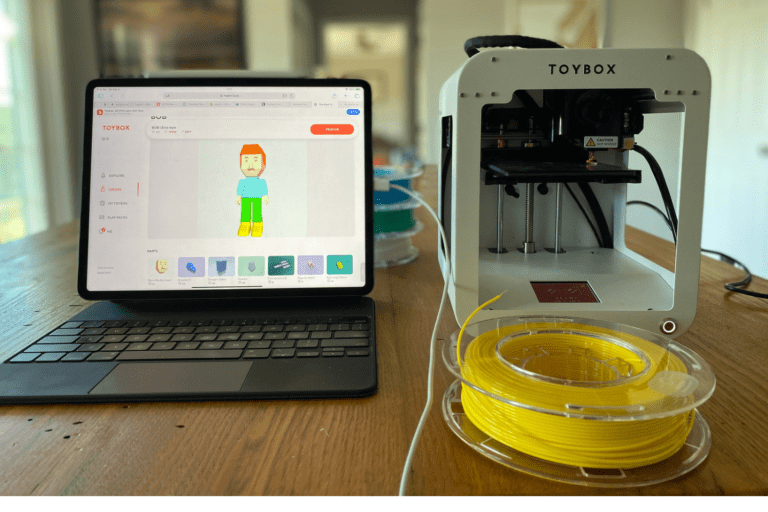How to Use Cabbage Juice for Chemistry Experiments
Do you want to learn some basic acid and base chemistry from the comfort of your kitchen? Try this simple cabbage juice chemistry experiment with your kids to explore the science behind common household items while fostering curiosity about the natural world!
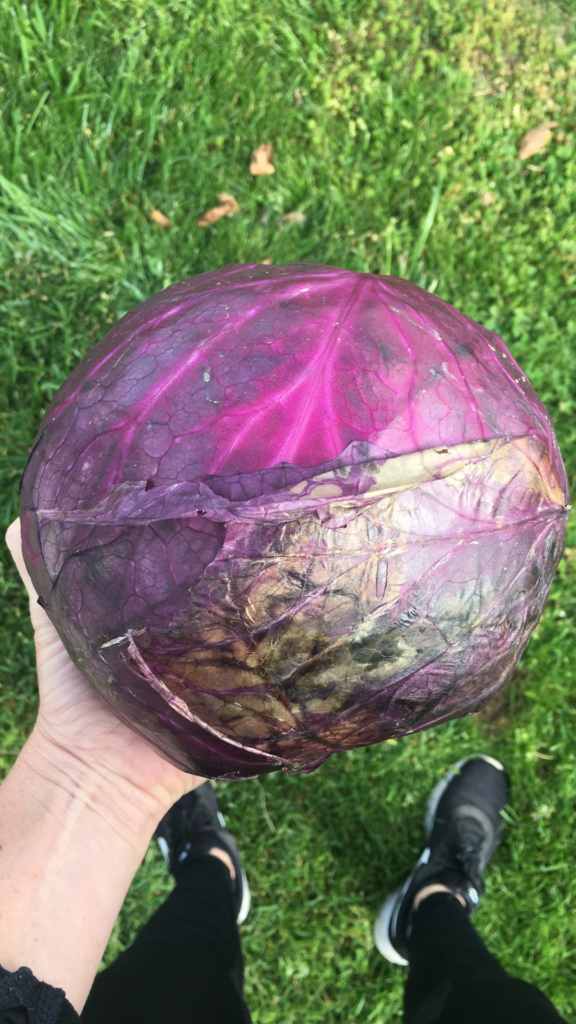
Do your kids ever ask you to “make potions”? I don’t know if it’s due to the influx of magical-themed television shows and books in our home, or just an innate curiosity about the world around us, but my kids LOVE to mix up concoctions of all types. As a former Chemistry teacher, I secretly adore their inquisitive nature and have capitalized on their interests to introduce some basic chemistry principles using cabbage juice.
Yes, that’s correct, I said cabbage juice. Read on to learn about how this vegetable can be used as a natural indicator for exploring acid and base chemistry.
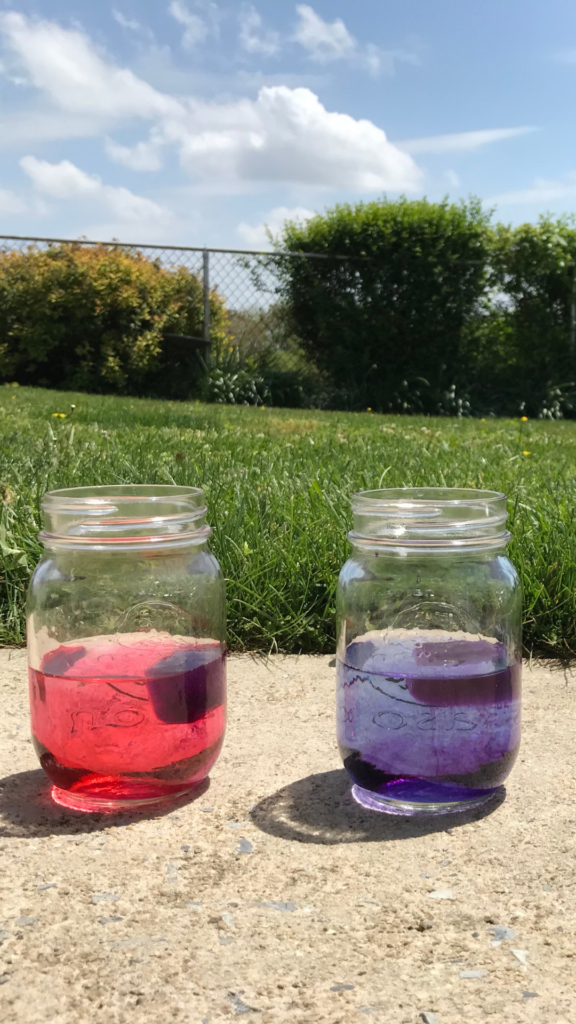
The Science of Cabbage Juice Chemistry
Scientists use pH indicators to determine if a substance is classified as acidic, neutral, or basic. These indicators may change color based on the chemical properties of the substance they are mixed with. Red cabbage juice can be used as a natural indicator to answer questions about the acidity of a substance, making Chemistry colorful and easily accessible to students of all ages. I
But how does cabbage juice work?
Red cabbage juice contains pigments called anthocyanins. These pigments abound in nature, giving plants their red, blue and purple colors, based on the pH of the soil that they are grown in. Here is a generalized breakdown of soil pH and plant coloration:
- Acidic soil = red fruit/flowers
- Neutral soil = purple fruit/flowers
- Basic soil = blue fruit/flowers
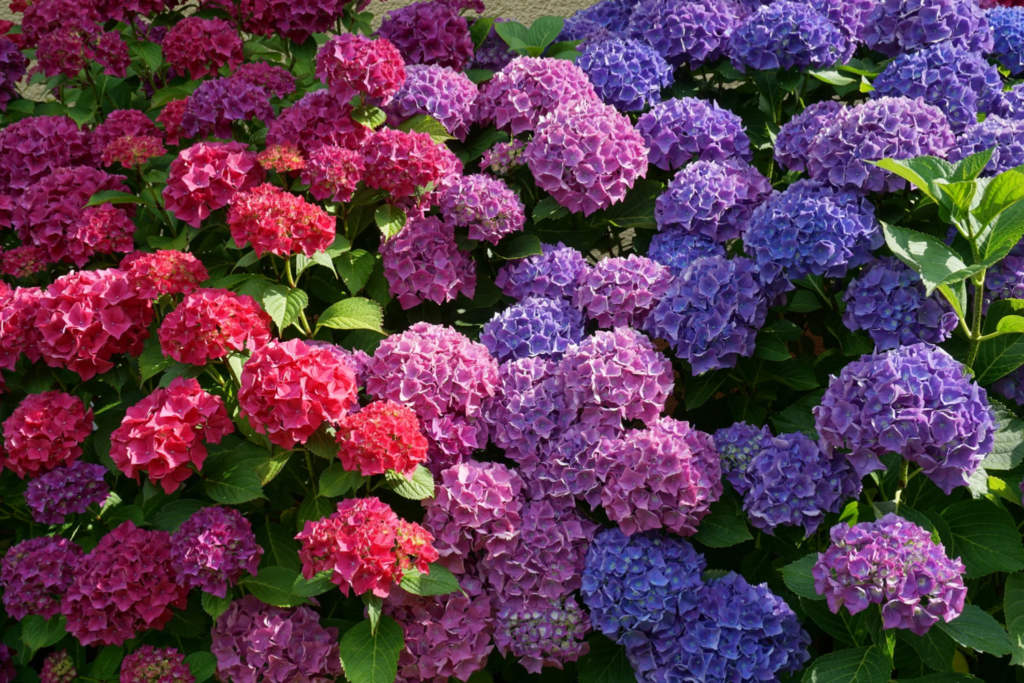
Hydrangea flowers are perfect examples of how a flower’s color is determined by the pH of the soil the plant is grown in. The more acidic the soil, the redder the flowers are and the more basic the soil, the bluer the flowers become.
Boiling cabbage juice in water extracts the anthocyanins and creates a purple colored solution. The cabbage juice solution turns purple because water has a neutral pH. By mixing red cabbage juice with a liquid, we can classify the solution as an acid, a base, or a neutral substance, based on the color of the mixture.
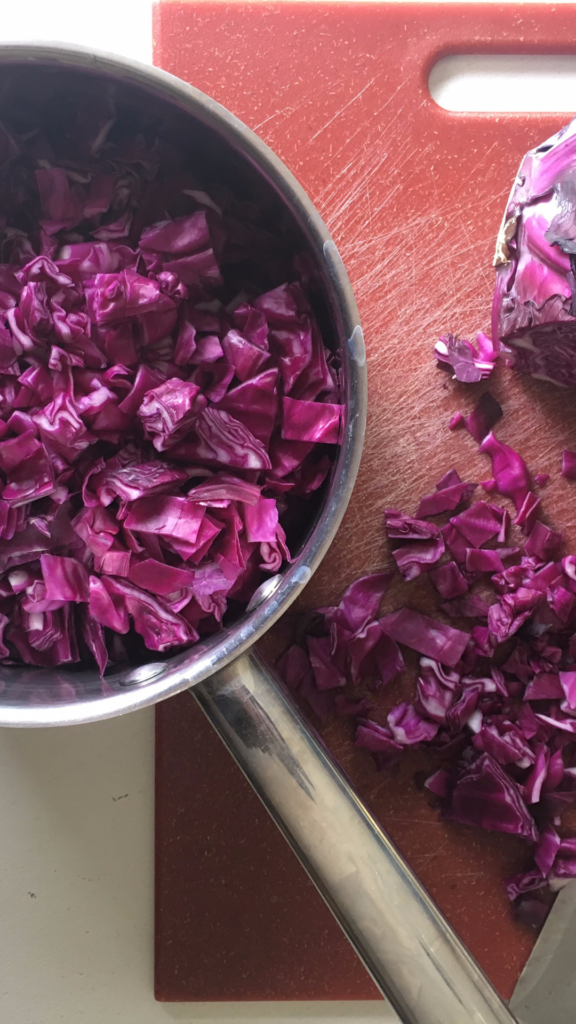
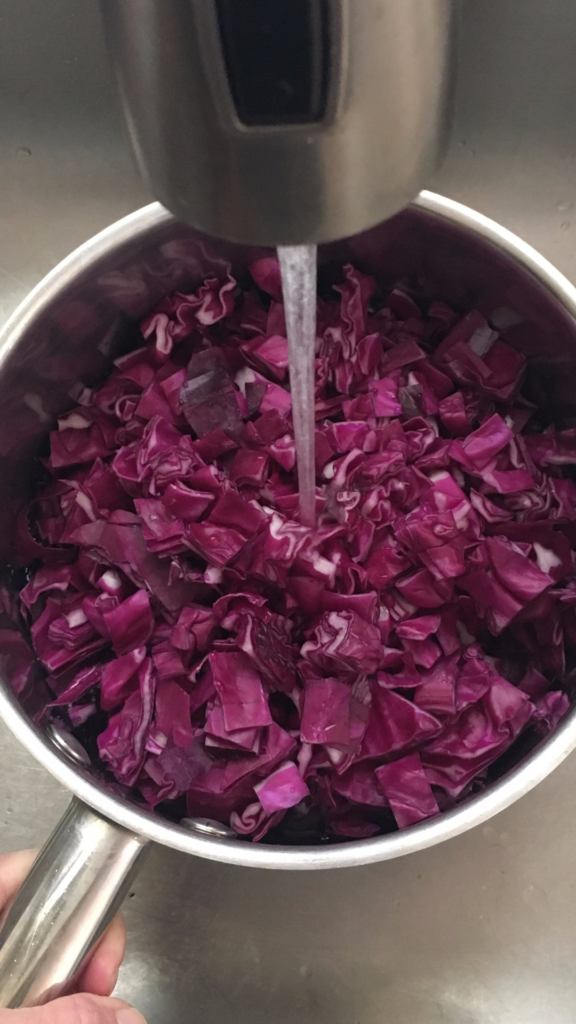
How to Make Red Cabbage Juice
Extracting the anthocyanins from red cabbage juice is simple. Follow these instructions to make red cabbage juice in the comfort of your kitchen or classroom.
What you’ll need:
- Small red cabbage
- Knife for chopping cabbage
- Pot for boiling water
- Strainer
- Glass jar with lid
- Ice cube tray (optional)
Instructions to make red cabbage juice:
- Chop the red cabbage into small pieces using a knife. Be sure to provide adult supervision if children are doing the chopping.
- Place the chopped cabbage in a pot and cover the cabbage with water.
- Heat the cabbage and water mixture until the water boils, stirring occasionally.
- Once boiling, remove the pot from the heat source and allow the cabbage water mixture to cool for 30 minutes.
- After the cabbage water mixture has cooled, strain the solid cabbage from the liquid. The remaining liquid should be a deep purple color.
- Pour the cabbage juice into a glass container, seal it, and store it in the refrigerator until ready to use.
- Alternatively, pour the cabbage juice into ice cube trays and freeze.
- Be sure to compost the solid, strained cabbage to return the remaining nutrients to the soil!
I like to freeze my cabbage juice in ice cube trays to make the juice easy to handle for young children. Freezing also extends the shelf life of the juice. However, if you make a batch of juice for a classroom of students, refrigerating the juice works just as well. Additionally, you may want to crack open a window when boiling the cabbage juice in water, as it gives off quite a distinct odor!
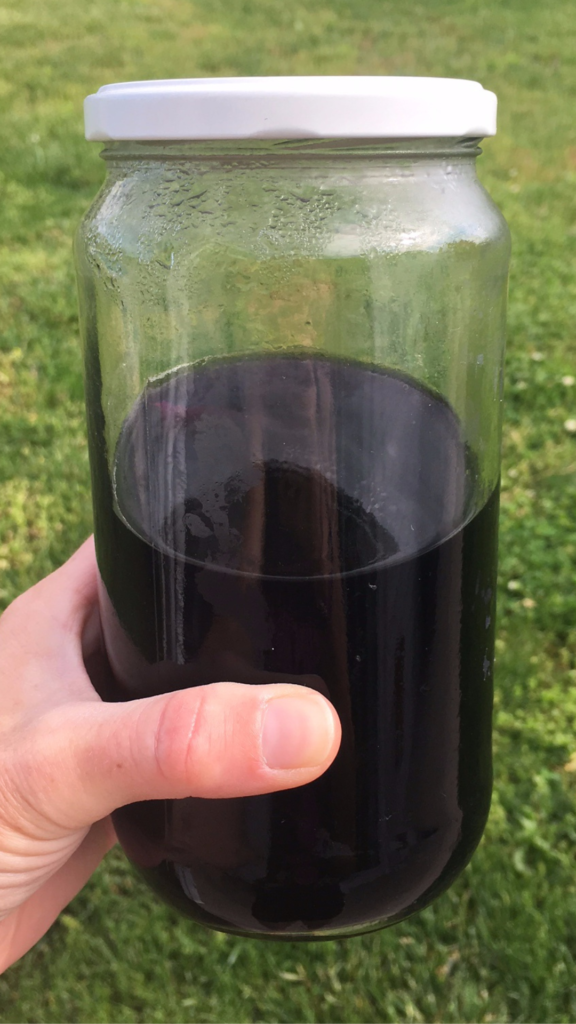
Supplies Needed to Experiment with Red Cabbage Juice
Now that you have made red cabbage juice, you’re ready to do some chemistry experimenting! Here are some simple household items to get you started:
What you’ll need:
- 3 glass jars
- 3 spoons
- White vinegar
- Water
- Baking soda (sodium bicarbonate)
- Red cabbage juice
Make Predictions About the Chemistry Experiment
Once you have gathered all of the necessary supplies, have your students make predictions about the pH property of each of the following substances: white vinegar, water, and baking soda. What color do they predict each substance will turn when red cabbage juice is added to them? What does the color tell them about the acidity of each substance? You may want to remind them about the following:
- Red = acidic
- Purple = neutral
- Blue = basic
Have your learners record their predictions to refer back to once the experiment is complete.
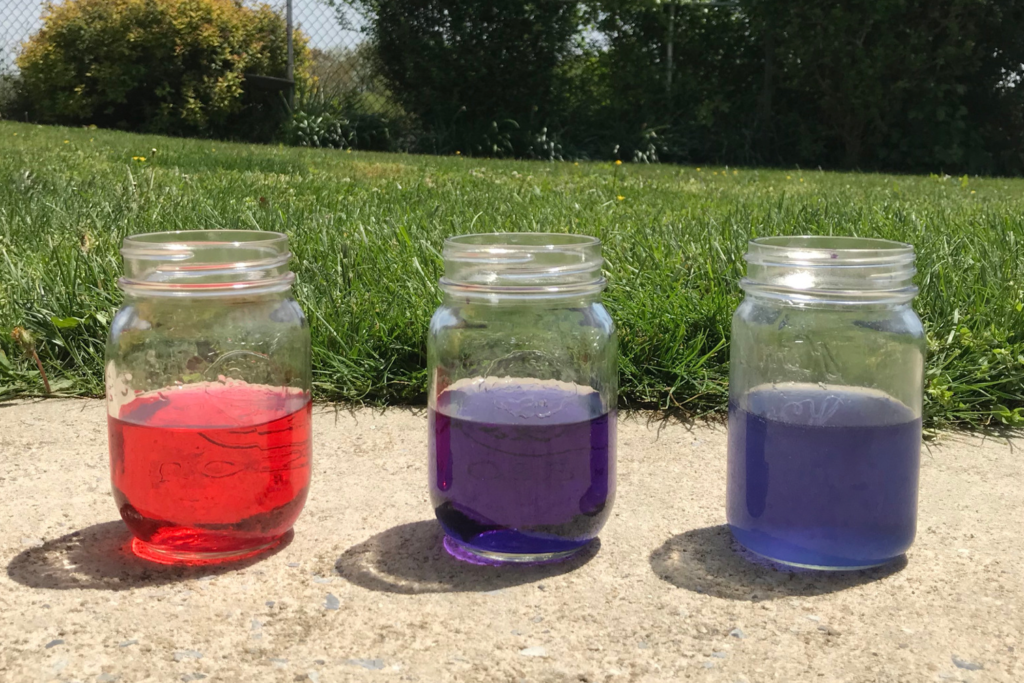
How to Experiment with Red Cabbage Juice
Once your budding scientists have made their predictions, have them follow these simple instructions to conduct their chemistry experiment.
Instructions for the Cabbage Juice Chemistry Experiment:
- Obtain three glass jars and label them Jar 1, Jar 2, and Jar 3.
- Add 250 mL (~1 cup) of white vinegar to Jar 1.
- Add 250 mL (~1 cup) of water to Jar 2.
- Add 250 mL (~1 cup) of water and 1 tablespoon of baking soda to Jar 3. Stir .until dissolved.
- Add 1 frozen cabbage juice cube (or ~15mL of liquid juice) to each jar.
- Using a different spoon for each jar to prevent contamination, stir to mix.
- Observe the color change and record.
- Pour the contents of Jar 1 into Jar 3. What happens?
At this point, you can have your learners experiment further by combining the contents of the jars and observing what happens. When it is time to clean up, simply pour the contents of the jars down the sink.
Analyze the Results of the Cabbage Juice Experiment
I love a good question and answer session to check my students’ understanding of a concept! Here are some simple questions that you can use to determine if your learners grasped the concepts presented in this science experiment. Questions can be discussed orally or can be answered in written form, depending on the age and ability level of your students.
- Did Jar 1 contain an acid, a base, or a neutral substance? How can you tell?
- Did Jar 2 contain an acid, a base, or a neutral substance? How can you tell?
- Did Jar 3 contain an acid, a base, or a neutral substance? How can you tell?
- What happened when Jar 1 was poured into Jar 3? Did the pH of the new mixture change? How can you tell?
Correct responses should look something like this:
- Jar 1 contained an acid because the vinegar water turned pink.
- Jar 2 contained a neutral substance because the water turned purple.
- Jar 3 contained a base because the baking soda water turned blue.
- When Jar 1 was added to Jar 3, the mixture turned purple. This color change indicates that the new mixture changed pH and is neutral.
Feel free to demonstrate the experiment again while you are reviewing the questions in an effort to further your learners’ understanding.
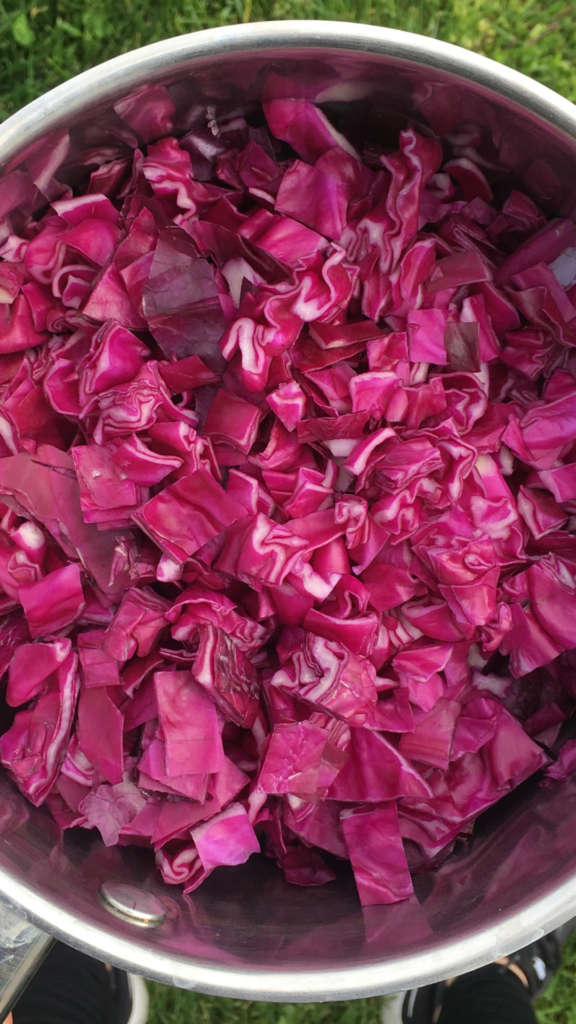
Extend the Learning of Cabbage Juice Chemistry
Now that your students have a basic understanding of how color can indicate the pH of a substance, allow them to test other substances with red cabbage juice. Here are some additional common household items to consider:
- Lemon juice
- Milk
- Carbonate water
- Liquid hand soap
- Colorless carbonated soda, such as Sprite or 7-Up
- Rain water
Note that the additional items I’ve suggested are colorless, light yellow, or white. Avoid using substances that are dark in color, as a color change will be hard to observe. Facilitating a foundational knowledge of basic chemistry through experimentation with common household items is a fantastic way to encourage a love of science and curiosity about the world around us.
How to Make Cabbage Juice for Chemistry Experiments
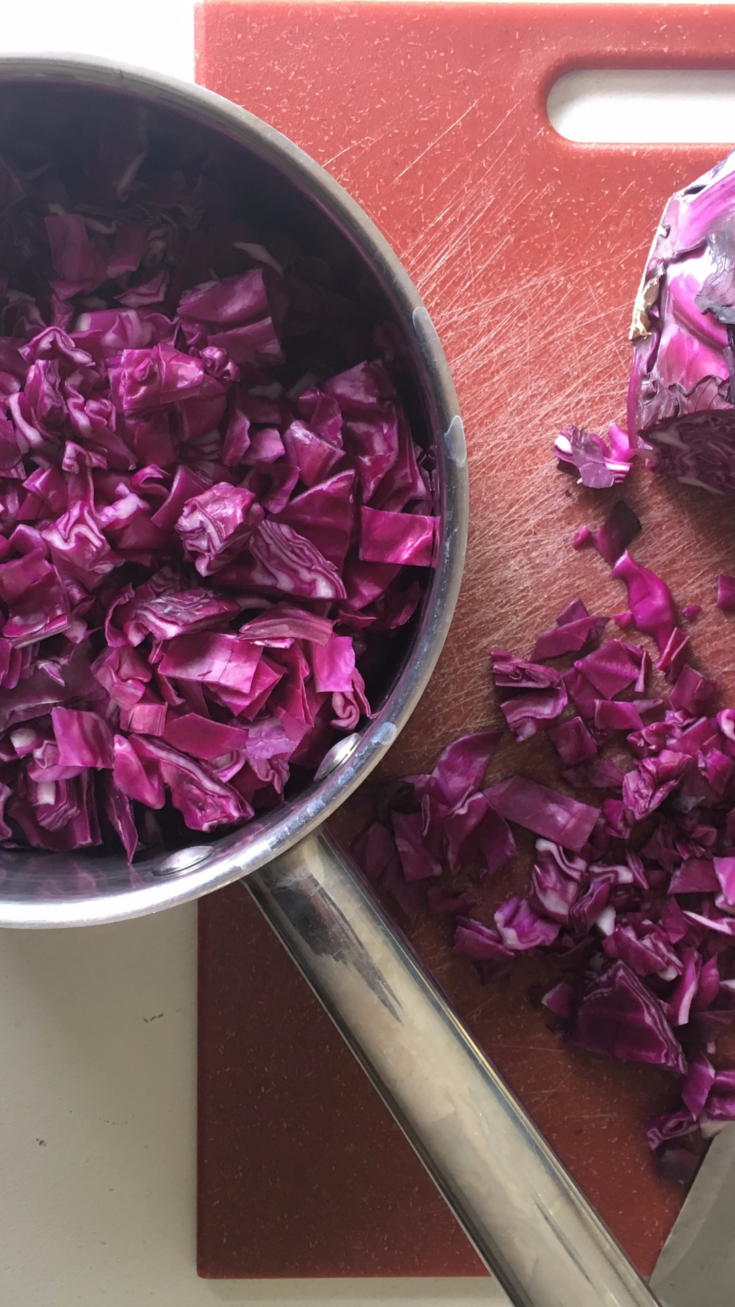
Boiling cabbage juice in water extracts the anthocyanins and creates a purple colored solution, which is perfect for acid-base chemistry experiments! Follow these instructions to make red cabbage juice to conduct chemistry experiments from the comfort of your kitchen or classroom.
Ingredients
- Small red cabbage
- Knife for chopping cabbage
- Pot for boiling water
- Strainer
- Glass jar with lid
- Ice cube tray (optional)
Instructions
- Chop the red cabbage into small pieces using a knife. Be sure to provide adult supervision if children are doing the chopping.
- Place the chopped cabbage in a pot and cover the cabbage with water.
- Heat the cabbage and water mixture until the water boils, stirring occasionally.
- Once boiling, remove the pot from the heat source and allow the cabbage water mixture to cool for 30 minutes.
- After the cabbage water mixture has cooled, strain the solid cabbage from the liquid. The remaining liquid should be a deep purple color.
- Pour the cabbage juice into a glass container, seal it, and store it in the refrigerator until ready to use.
- Alternatively, pour the cabbage juice into ice cube trays and freeze.
- Be sure to compost the solid, strained cabbage to return the remaining nutrients to the soil!
Notes
I like to freeze my cabbage juice in ice cube trays to make the juice easy to handle for young children. Freezing also extends the shelf life of the juice. However, if you make a batch of juice for a classroom of students, refrigerating the juice works just as well. Additionally, you may want to crack open a window when boiling the cabbage juice in water, as it gives off quite a distinct odor!

